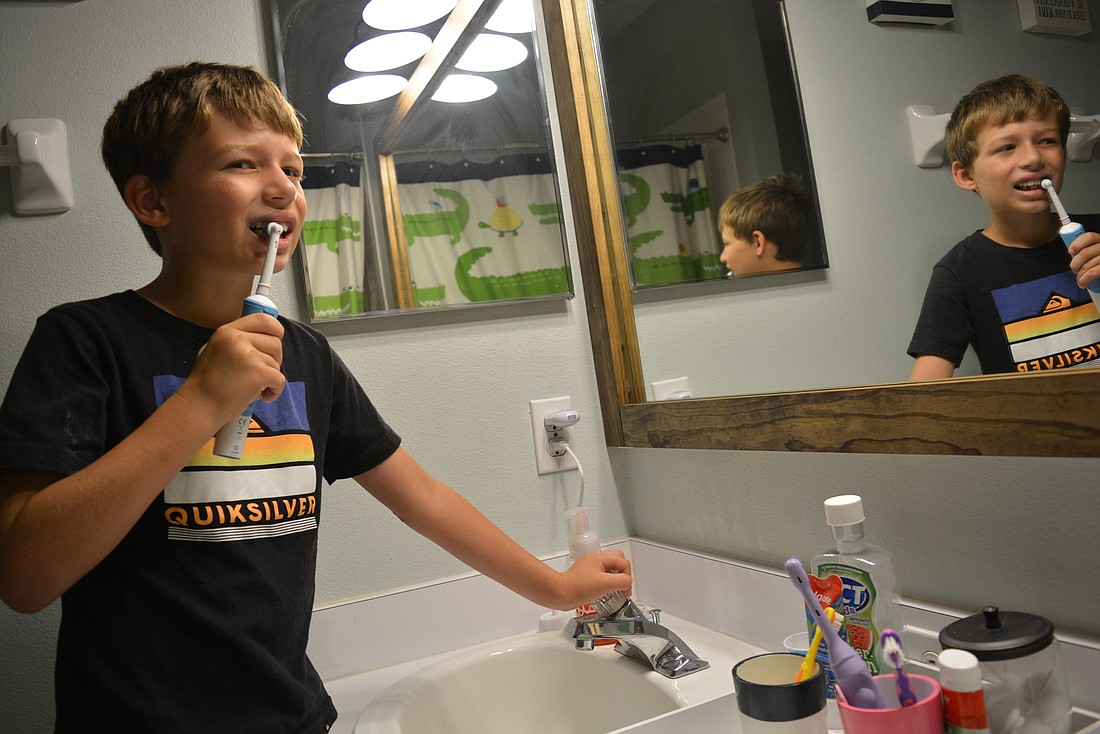- November 14, 2024
-
-
Loading

Loading

As the rains passed through East County last week, it appeared one of the driest stretches of the area’s history had come to an end.
The Southwest Florida Water Management District, which spans a 16-county area including Sarasota and Manatee counties, reported March 2020 was the driest March in 106 years. While the coronavirus threat lingers, it appears the threat of an extended drought might be behind us.
Still, officials from the water management district have been stressing that water shortages could be part of our future, so a few storms shouldn’t make us overly confident.
Expectations from the water management district are that Florida’s population will grow by 34% over the next 20 years and that our district’s water demands are projected to increase by 231 million gallons a day.
“Our current water resources will not be able to meet this demand without tapping into alternative water supplies, such as reservoirs used to store excess surface water, which come with a heavy price tag,” said Jay Hoecker, the district’s water supply manager. “Conserving and using today’s current water resources wisely will help to ensure that we will have the water supply needed for the near future.”
On April 28, the Southwest Florida Water Management District’s Governing Board voted to declare a Phase I Water Shortage for the District’s central and southern regions, which includes Manatee County.
The primary purpose for a Phase I Water Shortage is to alert the public that watering restrictions could be forthcoming. The order also requires local utilities to review and implement procedures for enforcing year-round water conservation measures and water shortage restrictions, including reporting enforcement activity to the district.
A Phase I Water Shortage does not change watering schedules, though it does prohibit “wasteful and unnecessary” water use.
With many people staying at home during the COVID-19 threat, the district suggests this as a good time to check your home for water efficiency.
Some of the tips from the district are simple ones, such as turning off the water while brushing your teeth. Others involve your appliances’ efficiency or your yard irrigation habits.
Shut off, then BRUSH
On average, the four-person household would waste 6 gallons of water a day by letting the water run while brushing their teeth. This figure is based on a 1.5 gallon-per-minute flow rate and a 1-minute run time.
That cost per day (average of $3 per 1,000 gallons) is estimated at 2 cents, or $6.57 per year.
That household would save 2,190 gallons of water annually.
SHORTER SHOWERS
On average, residents with a low-flow shower head use 2 gallons of water per minute to shower. If you cut your daily shower from 10 minutes to five minutes, you would save 3,650 gallons of water a year.
For a four-person household, that would be 14,600 gallons, or $43.80 annually.
ENERGY HYPE
Water conservation advocates promote “Energy Star”-labeled water-conserving household machines. If you switch to energy efficient appliances — clothes washer, dishwasher, two toilets, two shower heads and three faucets — you would save about $300
a year and about 10,300 gallons of water, without trying.
A dishwasher uses between 5 to 10 gallons of water per load, a kitchen faucet with an aerator uses 2.5 gallons of water per minute, and a kitchen faucet without an aerator uses 4 gallons of water per minute.
Here’s the breakdown for some energy-savers:
— Install a high-efficiency clothes washer (with Energy Star label), and save 3,000 gallons a year;
— Install a high-efficiency dishwasher (Energy Star label), and save 160 gallons a year; and
— Install a high-efficiency toilet (1.28 gallons per flush), and save 1,200 gallons a year.
LAWN MASTER
During the cooler months, your lawn needs one-half to three-quarters inch of water per week, according to research by the
University of Florida. One-half to three-quarters of an inch of water every 10–14 days is sufficient. In fact, if your lawn has received any significant rainfall, then you can turn off your irrigation system and operate it manually as needed. During the hot season, it needs about 1 inch per week.
You can determine when your grass needs water when:
— Grass blades are folded in half lengthwise on at least a third of your yard;
— Grass blades appear blue-gray; and
— Grass blades do not spring back and leave footprints on the lawn for several minutes after walking on it.
CHECK FOR LEAKS
The Southwest Florida Water Management District reports leaks are the biggest water waster, both inside and outside of your home. You can use your water meter to check for leaks.
To do so, turn off all faucets and water-using appliances, and make sure no one uses water during the testing period. Wait for the hot water heater and ice cube makers to refill and for regeneration of water softeners. Go to your water meter, and record the current reading.
Wait 30 minutes. (No water should be used during this period.)
Read the meter again. If the reading has changed, you have a leak.